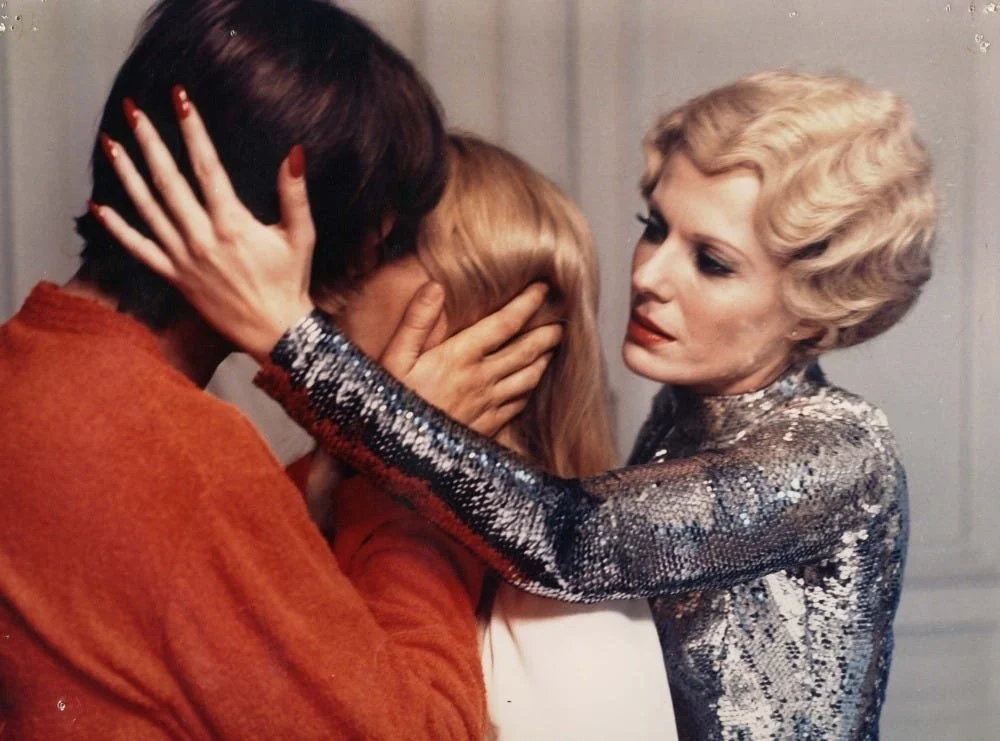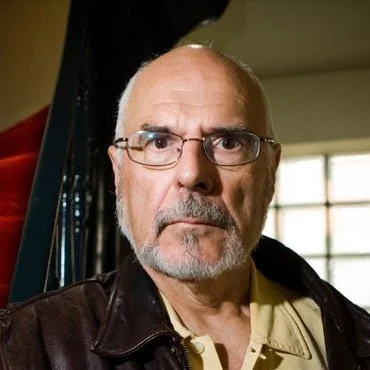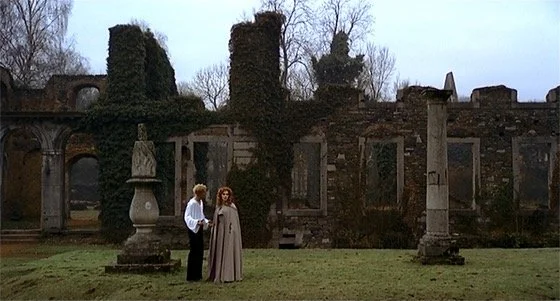IN CONVERSATION WITH HARRY KÜMEL
Belgian director Harry Kümel is responsible for the immortal and influential vampire classic DAUGHTERS OF DARKNESS and the fantastical MALPERTUIS, the tale of of a strange family forced to stay within a crumbling labyrinthean mansion full of secrets to receive the fortune left to them in their will by their mysterious uncle, played by Orson Welles. Both films have been remastered in 4K and are playing at this year's FrightFest. GORE IN THE STORE sat with Mr. Kümel to discuss the films, their legacy and the difficulties involved in working with Welles.
GORE IN THE STORE - Would you be able to tell us about the genesis of DAUGHTERS OF DARKNESS and MALPERTUIS?
HARRY KÜMEL - I was 28, but I had been at television for eight years or something and a very good producer I had made a film for in 1965 told me I think you should make a film of the book Malpertuis by Jean Ray. Jean Ray was well known to me because of children's books he had written in Dutch and also a Sherlock Holmes type of figure called Harry Dixon for some magazines, a subject matter that the great French filmmaker Alain Resnais always wanted to do, but was not possible for him. So I said to the producer I shall read that novel. I read it and thought it was impossible. So we went to Paris to interview some people for a television magazine show and among these people was a publisher who had published some very esoteric kind of literature. I asked him off the cuff after the interview “Do you know maybe, someone in France who would be capable of doing a screenplay adaptation of Malpertuis?” He said there's only one person, and that is Jean Ferry. And so it started.
In the meantime, some young Belgian producers asked, can you make a film for us with lots of violence, sex and horror. I said, Yes, why not? I came to them with the idea of Countess Bathory, which they were afraid to make, because that was out of their league financially. Then I came up with the idea to have her still alive, and from there on, I began to make DAUGHTERS OF DARKNESS. We had written a treatment which was truly pornographic and I sent that to Jean Ferry, hoping that he would throw it in my face. But oh, no, he sent me a telegram saying, I want to write the screenplay. (Laughing) So he wrote a marvelous screenplay which the American financiers diminished, and subdued a little bit, but not in such a way that was bad for the film. So we went on to make DAUGHTERS OF DARKNESS, and it was a big success internationally. I got more money from the producers, so we could go on making MALPERTUIS, which we had started. We realised the solution for making it was to do the first half of the book which was a very prosaic kind of story.
Could I ask a question of how Orson Welles got involved, and how he was to work with?
HK - That’s two questions! The first thing is he was among three people I had in mind: John Houston, Peter Ustinov, and then Orson Welles. Orson needed money at that time, and he said, yes, it's so much per day, and that was it. So he liked the script and came along. I began to suspect something was not completely right when he opened a big cardboard suitcase with his own theatre makeup. I had conceived that he would be in an environment of black, red and white, and with a dark green dressing gown. Fortunately, I had one of the great British directors of photography, Gerry Fisher, and one of the super great makeup artists, John O'Gorman who had done great work with the likes of Ava Gardner. He really was the greatest of all, especially to do Susan Hampshire, because she needed to have different kinds of faces. He was marvelous. Can you imagine that he made Susan Hampshire into somebody with a long nose only through makeup? He was so naughty.
John said “I know the bastard. He sweats. So start with the long shots and slowly go into big shots. And at the end we'll take off that horrible theatre stuff, and when you are in the close up, you'll be alright. But my close friend Claude Chabrol, who had just worked with him, said, “Oh, watch out because he always wants to put on a false nose.”
So I knew something was not completely right with the man. On the first day, we started at noon after a long morning. He said, “Let's go to a famous restaurant!”. He was a wonderful raconteur, he could talk and time went on. I said, “Orson. I think the actors are waiting for us. They are all made up”. “Let them wait. It's good for their parts.” Then I knew something was very wrong. (Sighs) It was not a great experience. He didn't like the technicians, calling them slaves. He was a dreadful person. But a dreadful person, I understood, even at that time, when I was so young. I understood that he was somebody who had gone through a lot. It was very difficult, not for me, so much, more for the actors, because he was not a trooper, but he loved the screenplay. But all the actors detested him, especially Michel Bouquet, who was the greatest French actor and director of his time in France, whose scene in the film, Orson destroyed, because he wanted a close up in the middle of the scene, which was a comedy scene. It was not easy. But this is the true story. It’s a very sad story. That's the reality, and people don't like it when you tell them that because they don't like the image they've made of somebody.
You made these two films quite closely together, and they couldn't be more different than each other. One of the things that is especially striking is your bold use of colour in both films, which is always refreshing to see. Especially when you don't get to see color used in such a way in films these days. I was wondering how you came to that approach.
HK - When you see old Technicolor films, the very good ones like GONE WITH THE WIND, which is beautiful. You see colour films being shot like black and white films: with contrast, with dramatic meaning. It's almost impossible to do these days because it took a studio to be able to do that. And in the studio you could shoot fast, and they could also shoot 14 hours a day. That was another point. But you could get that quality. So it takes quite a long time with the style, the kind of productions we make these days, to achieve that result. Gerry could absolutely achieve that result, at least in atmosphere. For instance, the director of photography for DAUGHTERS OF DARKNESS (Eduard van der Enden) was wonderful doing faces of ladies, whereas Gerry, he didn't care about it, he said it's always the same thing.
There are a few films nowadays, genre films that have started to go back to meaningful photography, with meaning and framing, meaningful position of characters, everything that has been lost, and it's coming back. There's a great film out just now called EDDINGTON, a marvelous film. And that already shows you what I’m talking about, but there are other ones like THE ZONE OF INTEREST that show you great filmmakers can still make that kind of cinema. It's more modern, smart. Usually with very old directors like George Miller and MAD MAX but not always, the director of EDDINGTON being the proof.
How do you feel about the reputation DAUGHTERS OF DARKNESS has just now?
That is something which makes me very happy. How many directors can say this? A small output. Who can say that your film lasts? That makes me proud. Even if I consider it a little bit technically not so well done. But even then, it gets a pass. Why that is, is because I've had the greatest treat to work with the greatest artists in the world, and the greatest actors, and I mean technical artists; directors of photography. I consider myself very lucky.
Iain MacLeod





